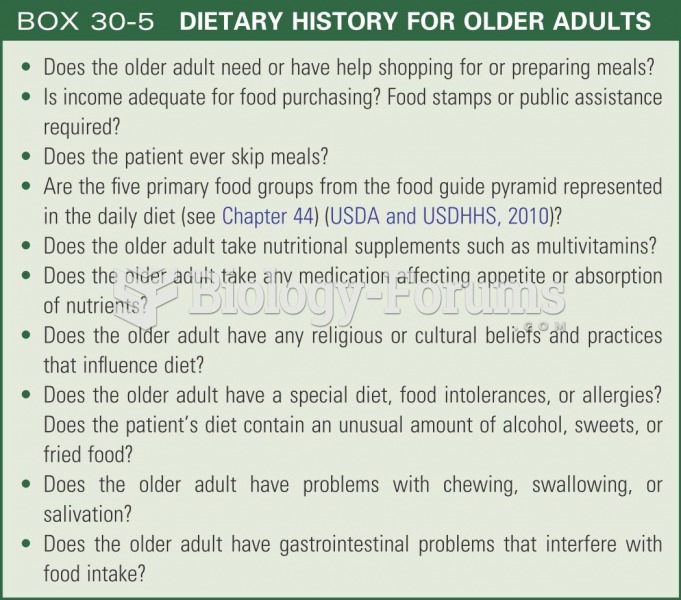Answer to Question 1
Correct Answer: 3
Rationale 1: Medications should be taken at the same time each day unless otherwise instructed. There is no rational basis for varying administration time.
Rationale 2: The nurse should not inform the client about every possible adverse effect. Only adverse effects that are common or serious should be reviewed.
Rationale 3: Changes in mental status, weight, or bowel function are common signs of an adverse drug reaction in older clients. These should be promptly reported so the possibility of an adverse reaction can be evaluated.
Rationale 4: Clients should be encouraged to keep a list of medications taken and doses, and the purpose of each. It should be safeguarded to minimize the chances of its being lost.
Global Rationale: Changes in mental status, weight, or bowel function are common signs of an adverse drug reaction in older clients. These should be promptly reported so the possibility of an adverse reaction can be evaluated. Medications should be taken at the same time each day unless otherwise instructed. There is no rational basis for varying administration time. The nurse should not inform the client about every possible adverse effect. Only adverse effects that are common or serious should be reviewed. Clients should be encouraged to keep a list of medications taken and doses, and the purpose of each. It should be safeguarded to minimize the chances of its being lost.
Answer to Question 2
Correct Answer: 3
Rationale 1: Age-related changes are not generally pathologic in nature.
Rationale 2: Anatomic and physiological changes are not generally reversible, with even the most advanced modern interventions.
Rationale 3: The anatomic and physiological changes are a normal and predictable part of aging.
Rationale 4: Because the anatomic and physiological changes are considered normal, they are not amenable to drug therapy.
Global Rationale: The anatomic and physiological changes are a normal and predictable part of aging. Age-related changes are not generally pathologic in nature. Anatomic and physiological changes are not generally reversible, with even the most advanced modern interventions. Because the anatomic and physiological changes are considered normal, they are not amenable to drug therapy.






